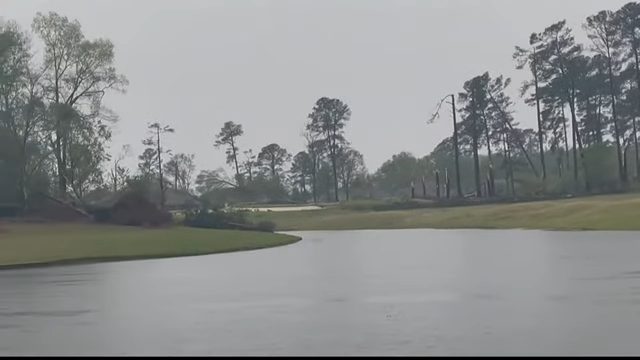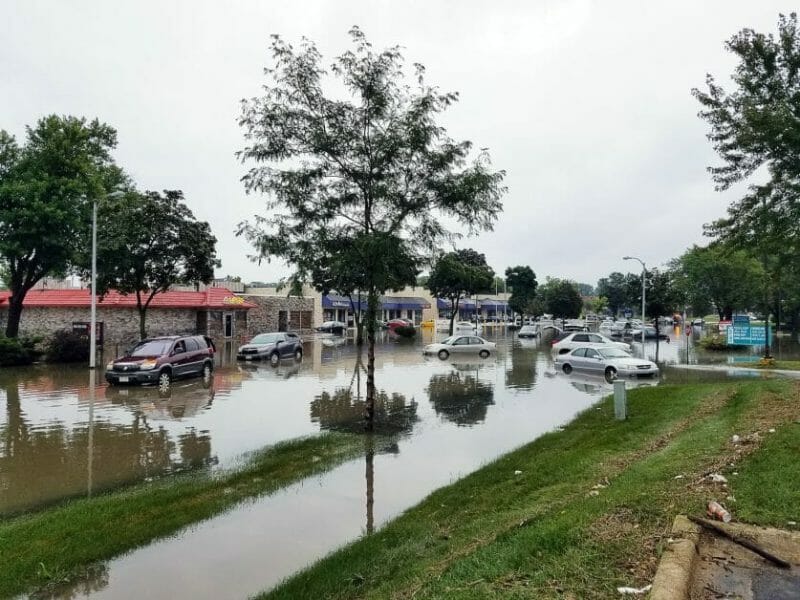Quick Navigation
Knowing all the details of an impending flash flood in time can save many lives. In that vein, you ought to be familiar with flash flood alerts, so you don’t get caught unaware when one occurs.
A flash flood warning refers to a global hazardous weather report issued by national weather forecasting agencies to warn the public that a flash flood is on its way or is already happening in the warned zone.
In general, a Flash Flood Warning is issued if a flash flood is foreseeable or occurring. If you are in a flood-prone zone, get to a higher elevation. A flash flood is a spontaneous, violent flood that can build up in minutes. It’s even possible to have flash floods in areas not receiving rain. When flash flooding is foreseeable, residents should do the following:
- Keep an eye out for any signs of heavy rain.
- If you see or hear rapidly rising water, relocate to higher ground.
- Do not try to cross the flowing water.
I’ll shed more light on this in the article below.
What is A Flash Flood Warning?

A flash flood warning refers to a global hazardous weather report issued by national weather forecasting agencies to warn the public that a flash flood is on its way or is already happening in the warned zone.
A Flash flood is sudden and violent and can be caused by heavy rain or, in rare cases, a dam break. Flash flooding is caused by rainfall severity and duration, landforms, soil conditions, and ground cover.
Most flash floods happen when there is a lot of rain in an area, and the water is funneled through streams or narrow gullies. Flash floods can form in minutes or hours; it’s possible to have a flash flood without seeing any rain.
Types of Flash Flood Alerts
A flash flood watch indicates that conditions are conducive to flash flooding.
- Flash Flood Warning
A flash flood warning indicates that a flash flood is occurring or will occur soon and is typically issued when there are strong weather radar echoes for a flash flood-prone area. Flash floods can also happen due to a dam or levee failure or as a sudden release of water held back by an ice jam.
What a Flash Flood Warning Entails
When flash flooding is coming, residents should do the following:
- Keep an eye out for any signs of heavy rain.
- If you see or hear rapidly rising water, relocate to higher ground.
- Do not try to cross the flowing water.
Easy-to-Read Flash Flood Warning
To effectively communicate the threat of a flash flood, NOAA’s National Weather Service has switched to a bulleted format with easily readable information that entails a description of the flash flood hazard, the source of the info, and the hazard impact. [1]
The fresh impact-based format has enabled more targeted Wireless Emergency Alerts to those who require immediate action to save lives during a flash flood event.
The reformatted flash flood warning application has been installed in nine local National Weather Service (NWS) forecast offices. [2]
The system builds on the successful reformatting of severe thunderstorms, tornados, and special marine warnings. And it is part of the larger Hazard Simplification Project, which strives to enhance official communications of watches and warnings.
Alert for Considerable and Catastrophic Flood Warnings
The NWS forecast offices issue flash flood warnings in this new format when a life-threatening flood event is happening, and immediate action is required.
A wireless alert is triggered by warnings with the damage threat tag “considerable” or “catastrophic.”
Considerable flood events are extremely dangerous and can cause significant damage.
Catastrophic events are flash floods that endanger lives and cause catastrophic damage. The latest tags assist in reducing the number of a flash flood warning Wireless Emergency Alerts currently distributed.
Wrapping Up
Flash floods are one of nature’s most common and dangerous natural hazards. They typically occur within minutes to hours of the immediate cause and deliver a damaging and potentially fatal rapid water rise into an ordinarily dry area. Heavy rain, river ice or debris jams, and dam/levee failure are all causes of flash flooding.
In the United States, most flash flood deaths occur inside vehicles swept away by high water. Turn around, don’t drown; never drive into a flooded roadway or around a barricade. Approved National Weather Service forecasts, watches, and warnings are always available at weather.gov.
References
[1] NOAA’s National Weather Service – https://www.noaa.gov/media-release/flash-flood-warnings-now-issued-in-easy-to-read-format
[2] National Weather Service (NWS) – https://weather.com/safety/floods/news/2019-02-19-flash-flood-emergencies-nws
Video Reference
11Alive

